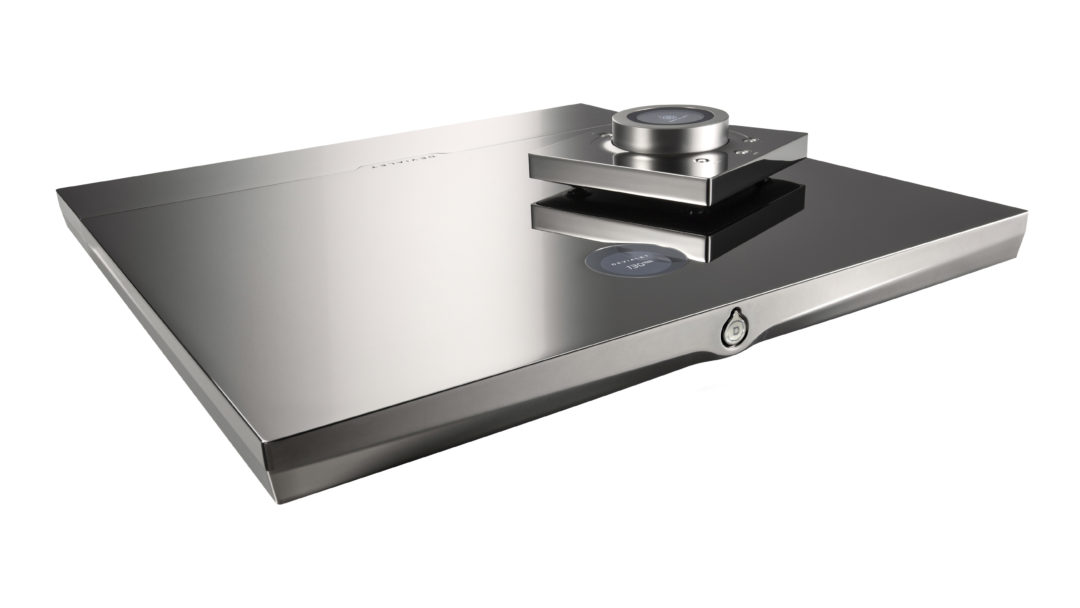In the space of just a few years, French manufacturer Devialet has gone from being an obscure producer to being a name on all hi-fi enthusiasts’ lips. As a sort of hi-fi answer to Tesla, they’ve challenged accepted truths and sought new, intelligent ways of making great hi-fi. Their advanced SAM technique that adapts the amplifier to precisely your speaker model is a good example. And their super potent Phantom speakers are another. But here we’re talking about the former. Specifically, the all-new Expert 140 Pro, the company’s first amplifier under the magical 5,000 euro limit. This puts it up against the likes of Naim Uniti Nova and the T+A R 1000 E, which have much the same sound character as Devialet. But Devialet has some important tricks that the T+A lacks.
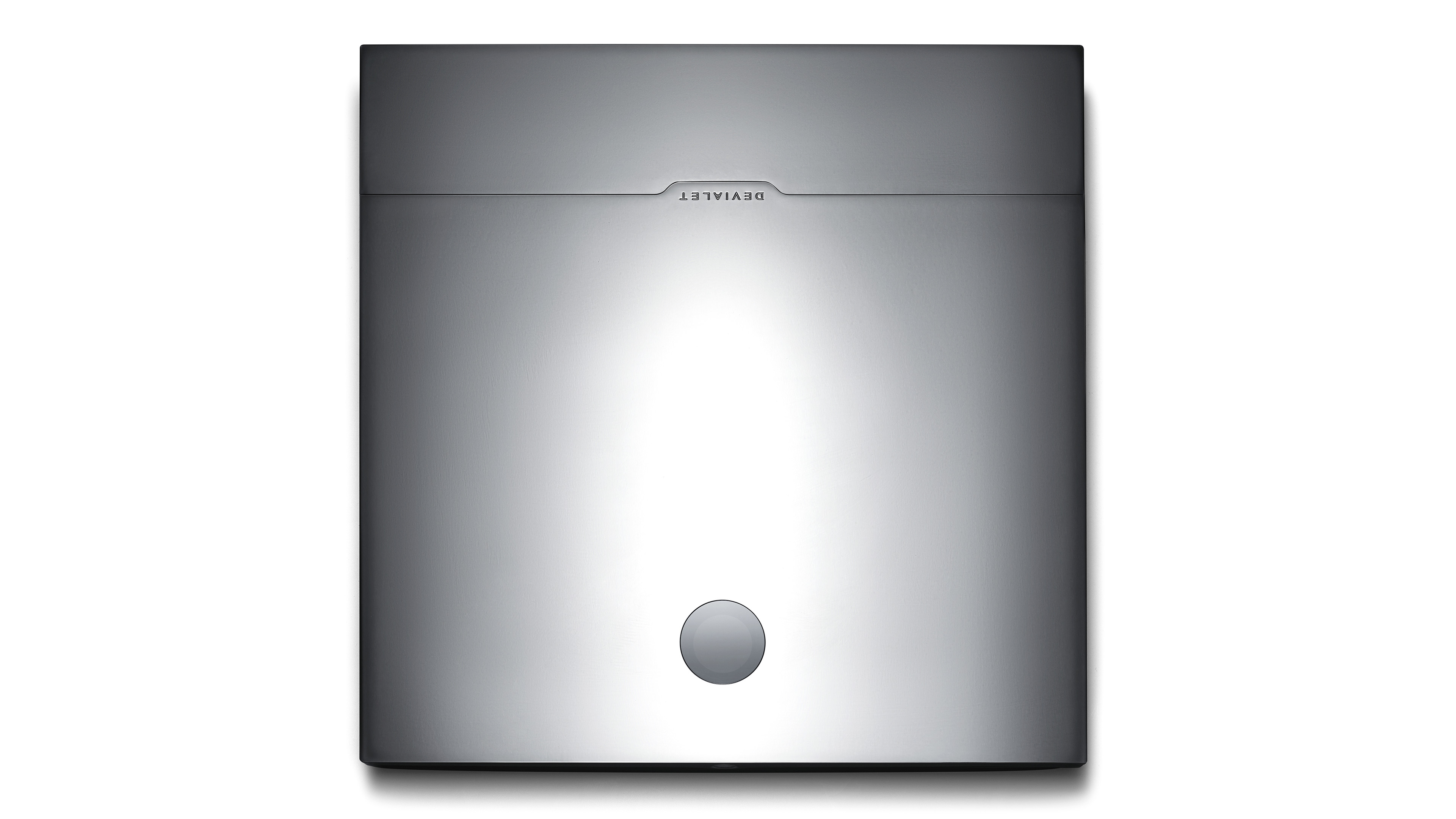
In this amplifier equivalent to a Formula 1 race car, the most advanced digital amplifier technology (a hybrid between classes A and D) has been employed, combined with high-resolution digital connections. But that’s not all, because with high-tech digital processing it’s possible to customise the amps to the user’s equipment. There’s a good chance you’ll find both your treasured speakers (almost 900 speakers are profiled) and your exact turntable pickup in the Devialet database (the database is constantly expanding), and if you do, something quite magical occurs. Previously, you could expect to fork out a minimum of 10,000 euro for a Devialet amplifier. With the Expert 140 Pro, the price tag has dropped to half.
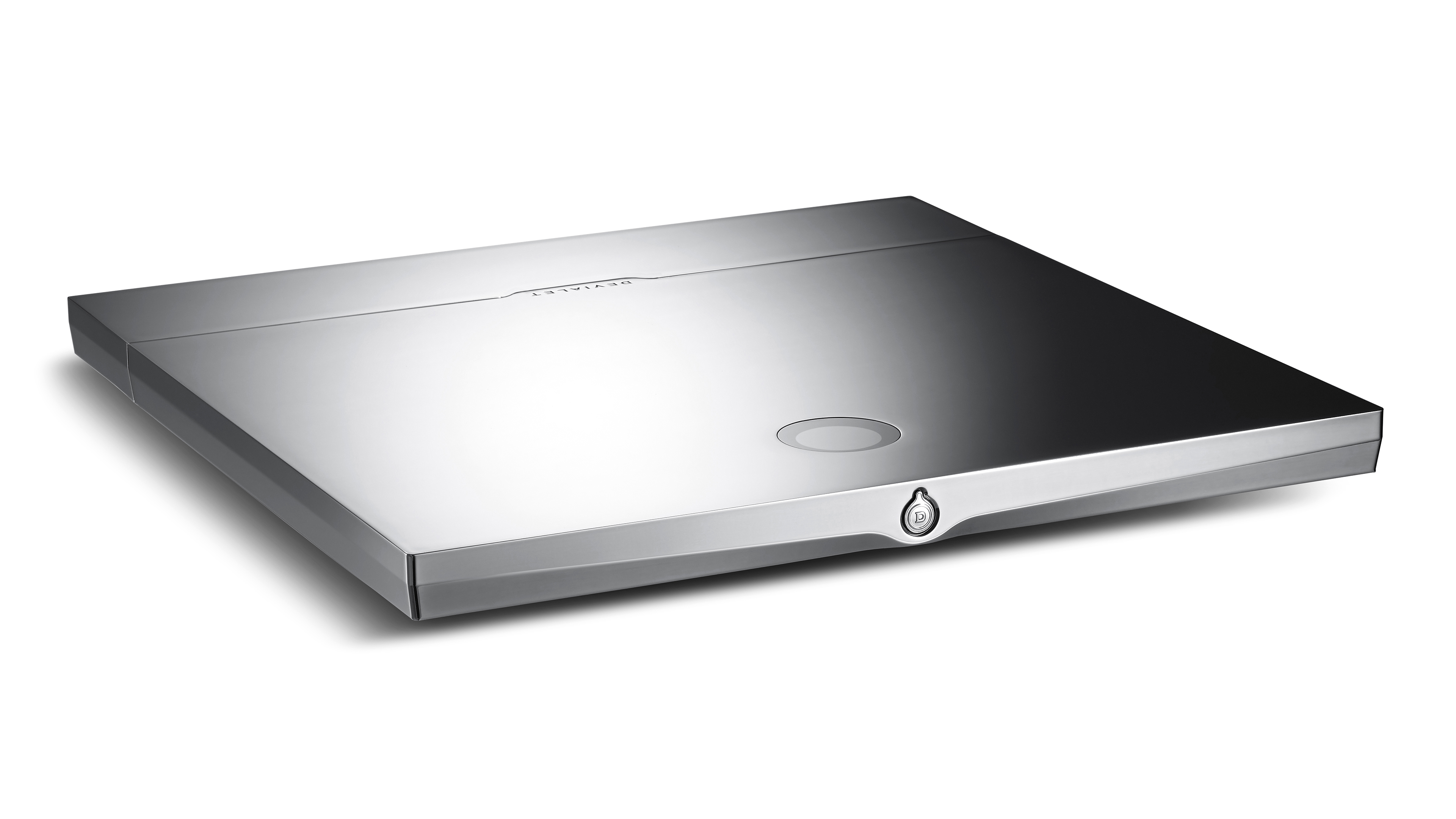
No, it’s not a bathroom scale
Expert 140 Pro looks a little like a large and expensive set of bathroom scales in highly polished metal. Whether this is your taste or not is up to you, but that it’s a breath of fresh air in an otherwise stolid high-fidelity jungle is, I think, undeniable. The remote control is also quite special. Just as square as the amplifier, with a large volume wheel in the middle. It is, of course, completely without looseness, as this is a step-less precision instrument. With buttons where features can be customized.
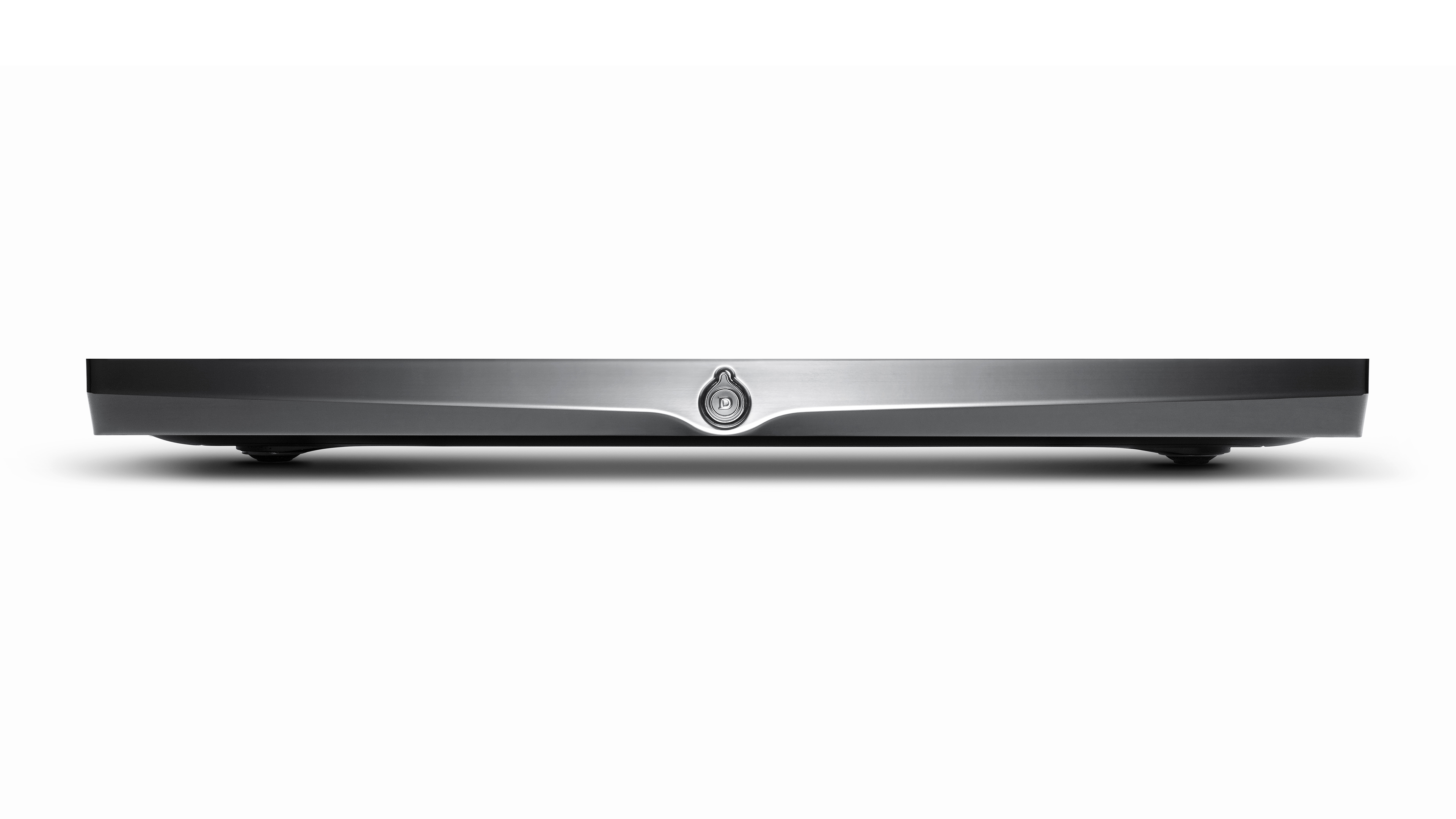
Streaming
Besides housing a digital amplifier of 2 x 140 watts in 6 ohms, the 140 Pro is equipped with digital converters and built-in streaming functionality. The Spotify Connect feature allows you to just pick up your phone and play directly from the Spotify app. Of course, I prefer better sound than that, and then there are some options. iPhone users can use AirPlay to stream wireless music in CD quality, but it’s when the amplifier connects to the home network that the possibilities for high-resolution music open up.
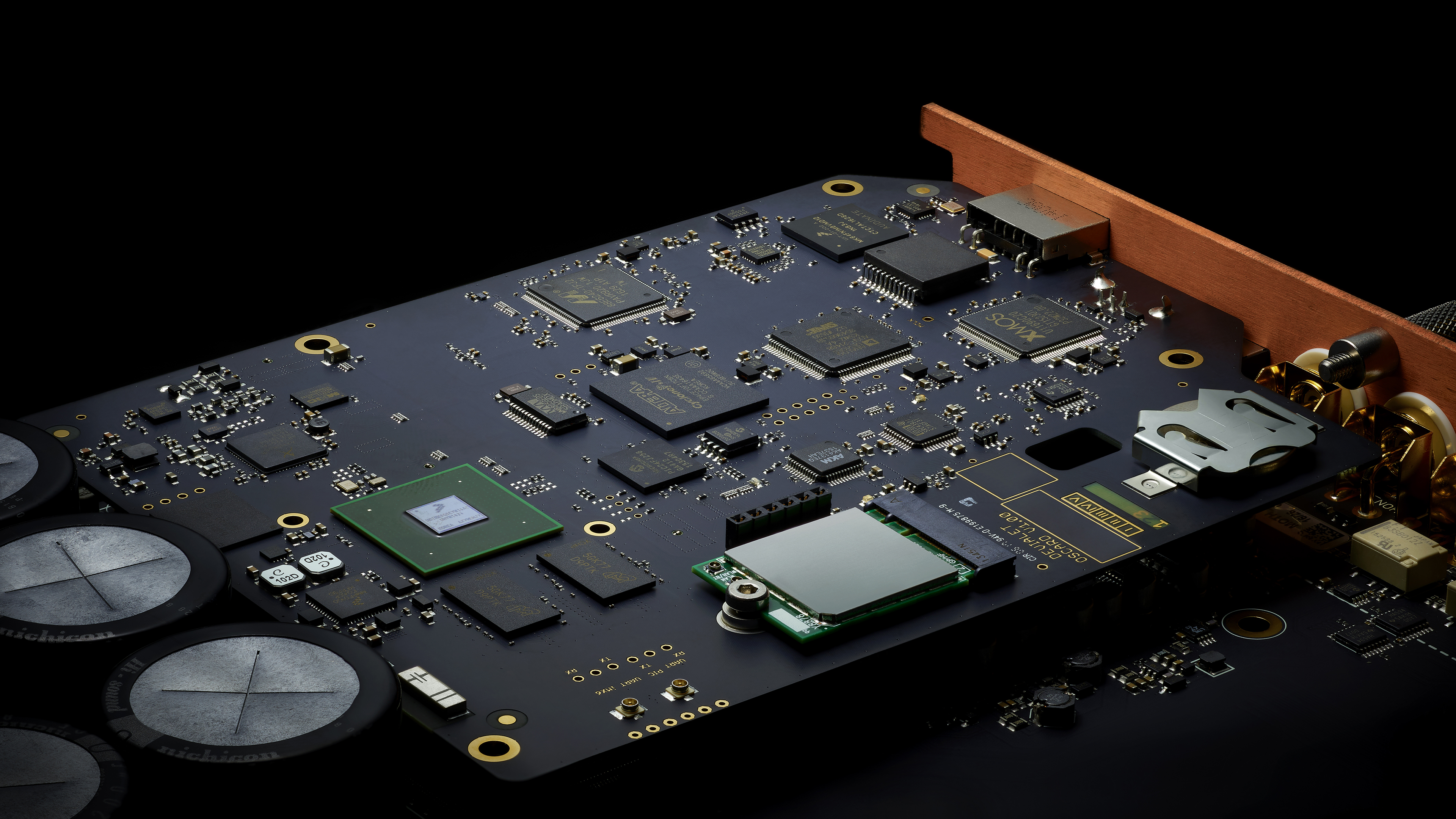
By installing the Air app, your PC or MAC can find the amplifier as a sound card, just as though it were connected to the computer by USB (also an option). If you use Roon, you can skip this, because Roon automatically locates the amplifier on the network. Run Roon on your Mac or PC and you can happily direct events from your telephone.
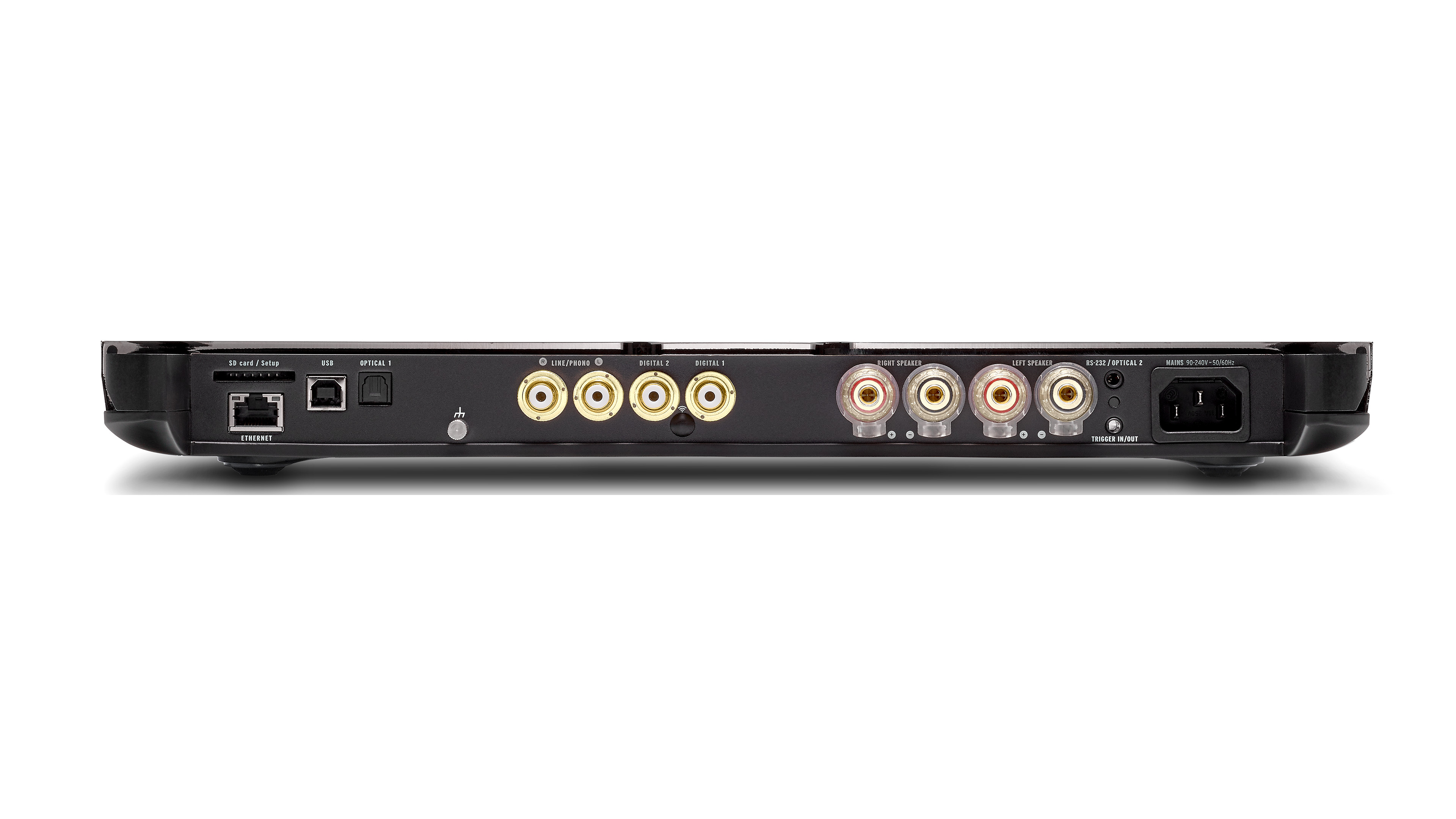
Equally advanced
I mentioned high technology, and although the Expert 140 Pro is more affordable than its big brothers, Devialet have not saved money on the digital innards. It is precisely as advanced as the others; it is rather the number of inputs and amp power that differentiates this from the others. Note that the pre-amplifier output is not standard but it can be added as an optional extra.
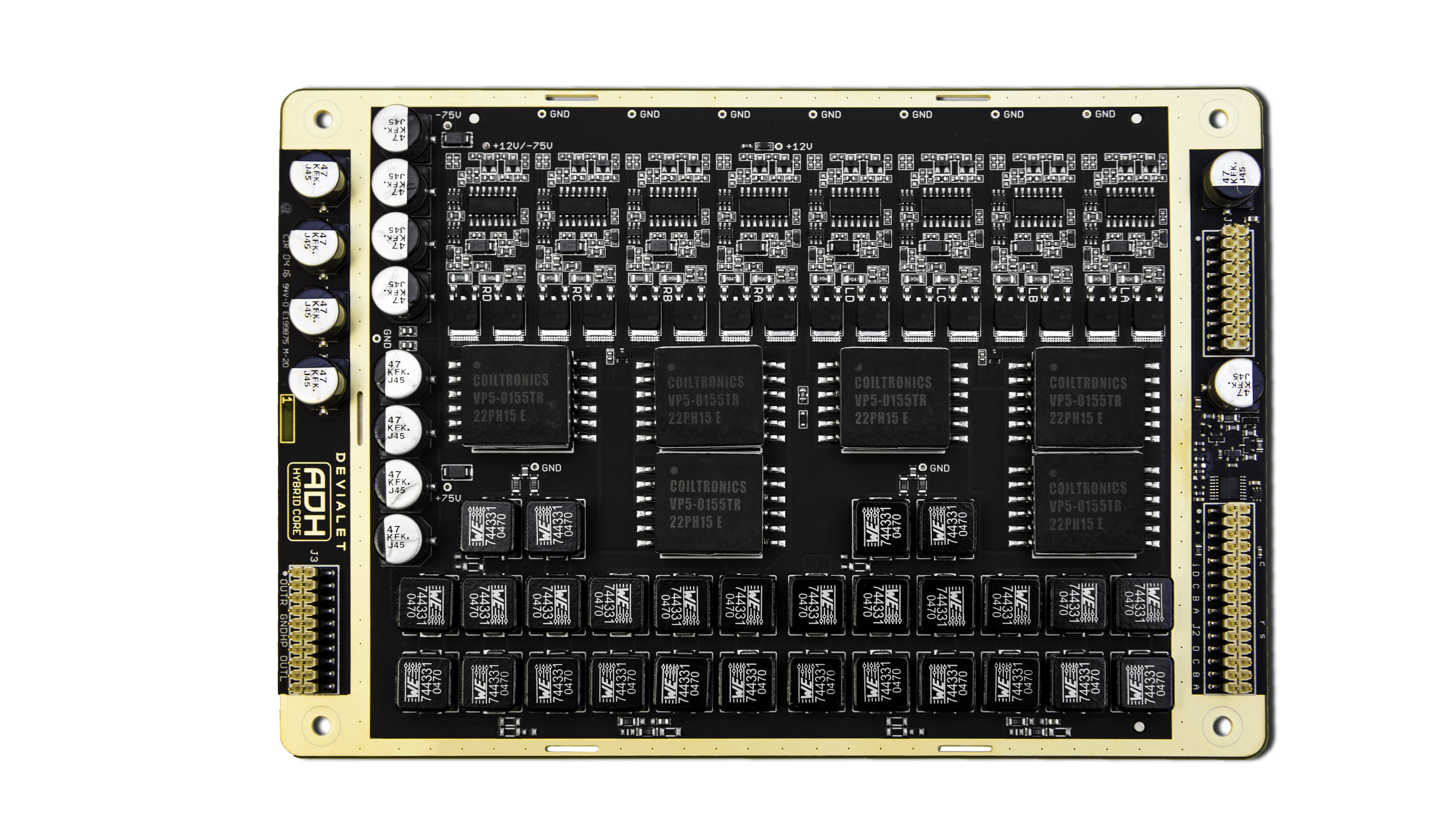
Passive speakers
Let’s start with the speakers. Almost all hi-fi speakers are passive, despite the fact that a passive filter has several weaknesses. In addition to the music signal losing dynamism by going through the resistance in the filter, a time lag will also arise each time the signal changes. This means the timing between all the drivers in a multi-directional speaker can never be 100% optimal. This negatively affects the sense of timing and rhythm and, moreover, the stereo perspective. Furthermore, no speaker has perfectly linear resistance (impedance), which means that it burdens the amplifier differently at different locations in the frequency register. The speaker may behave slightly differently from amplifier to amplifier, depending on how good the amplifier is at pumping out power to where the impedance is lowest.
All this is avoided in an active loudspeaker with electronic filter, where the built-in amplifiers are also customised to each speaker driver. For these reasons, a passive speaker can never really get quite the same timing and dynamics as a comparable active speaker. No matter what kind of amplifier you hook up to.
Ingenious compensation
At least that’s what we thought. But then Devialet suddenly appeared with a healthy dose of ingenuity. The French amplifier manufacturer brought their measuring equipment into the field and in recent years measured many popular – and some quirky – speaker models. The work is ongoing, and they try to keep up to date as well as they can on new models. The impedance curve, frequency response and timing errors are measured, and then a compensation filter is created. Devialet calls this SAM, or Speaker Active Matching. The result is better timing and stereo imaging, and a more extensive deep bass. They also measured the reach of the bass drivers and built a protection filter that prevents the bass driver from beating longer than it is designed for, allowing you to play at even higher sound pressure levels than before.
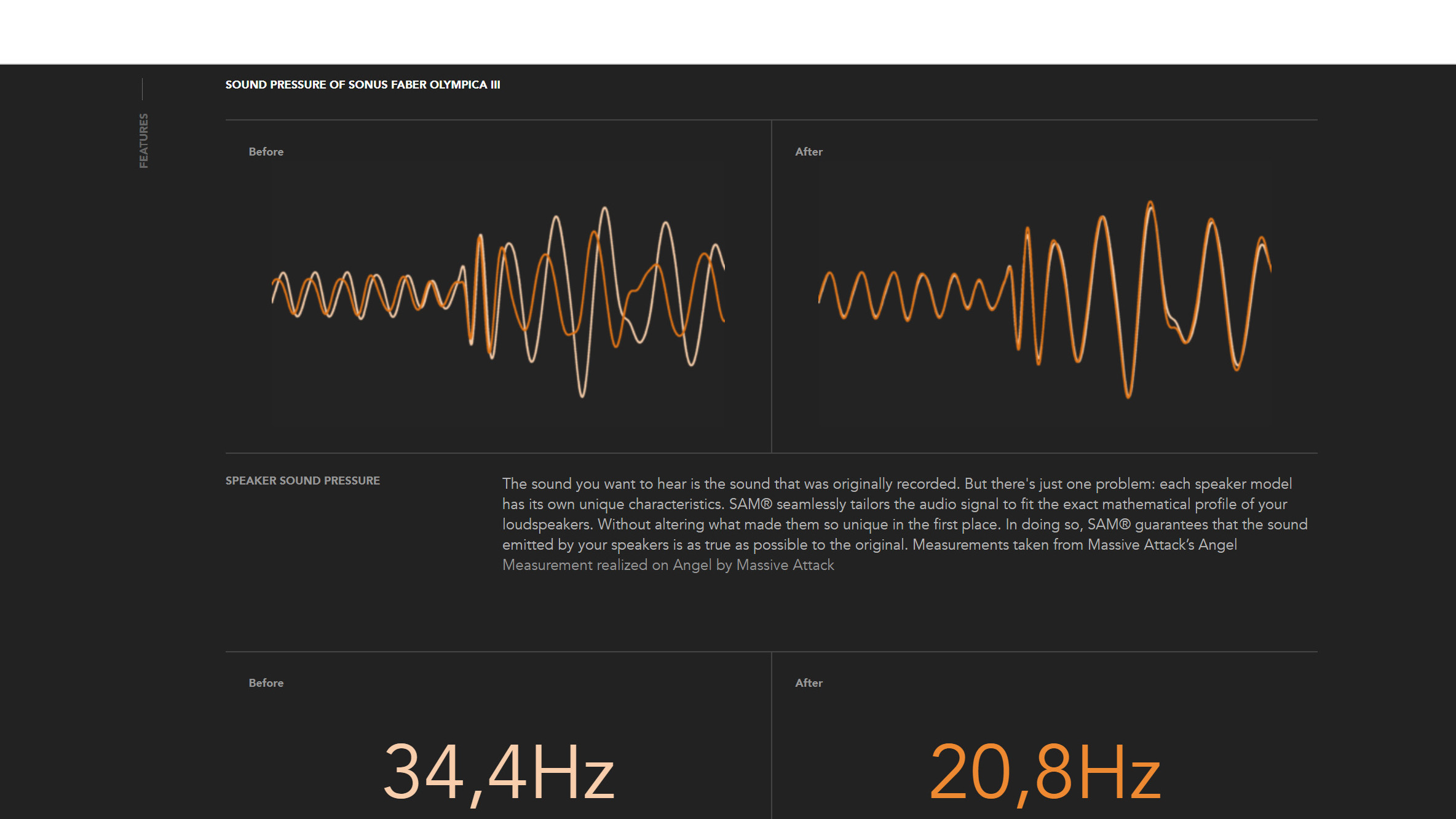
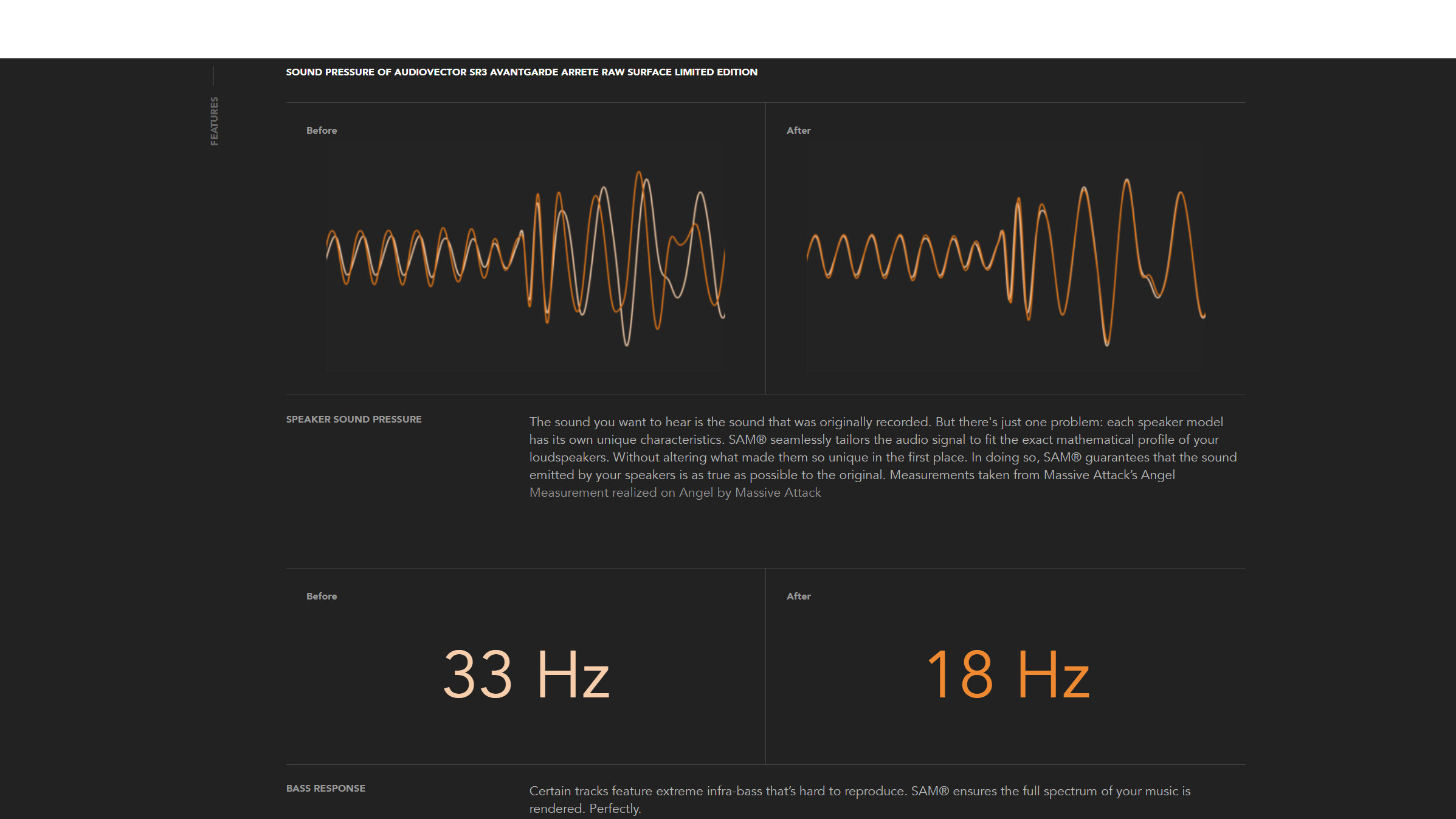
The analog line input can be just that or be reprogrammed as a turntable input. For your exact pickup model! Select this in setup on Devialet’s home page, and Devialet automatically sets the pickup type and voltage, whether stereo or mono. If your pickup isn’t listed, the parameters can be set manually. You can also select the EQ curve. The standard is the RIAA 1976 curve, which most people use, but if you have some odd vinyl records that were cut for other EQ curves, now you can finally hear how they were really meant to sound!
Analog sources are digitised in the amplifier to a 24-bit/192 kHz signal.
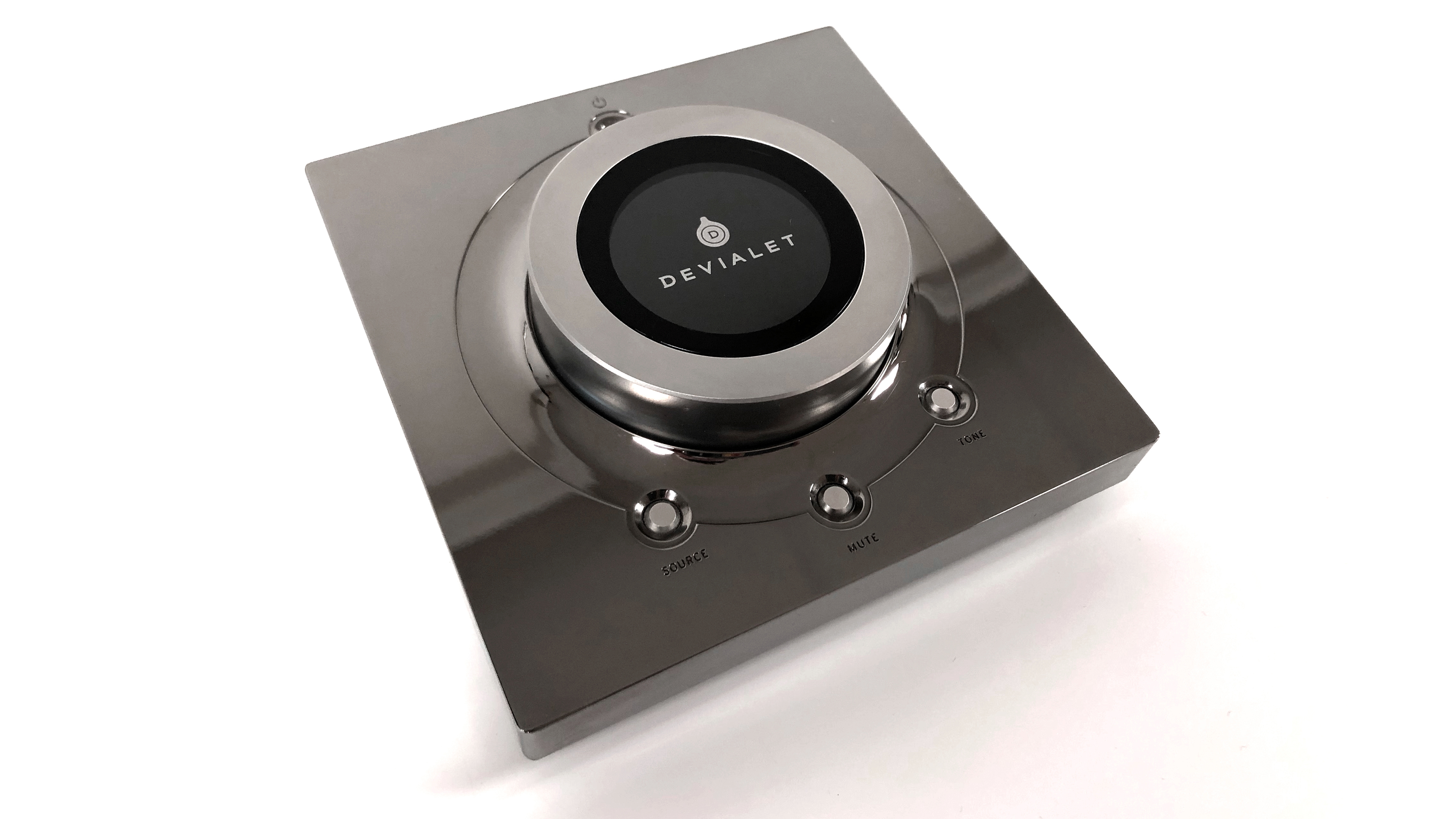
Memory card
Any settings you wish to make, whether the SAM filter, pickup settings, or if you want to program the buttons of the remote control, is done through Devialet’s website. These settings are stored on a memory card as a data file. Insert this into the back of the amplifier, and the settings load automatically. You can turn the SAM filter on and off or choose a level between.
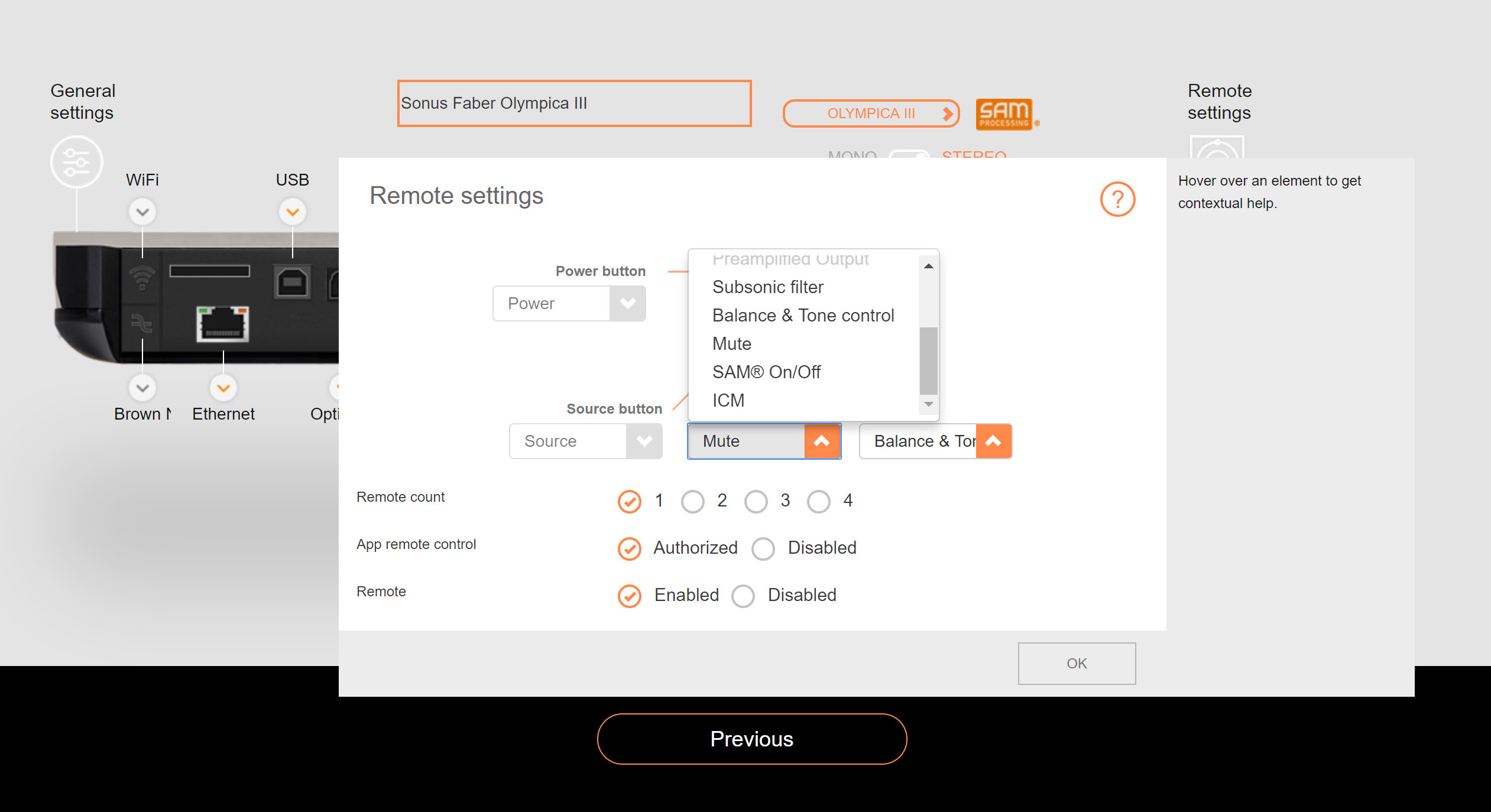
Subsonic filter
Devialet’s amplifiers also have a high-pass filter built in, or subsonic filter if you like. If your room has problems with the deepest bass, you can plug this in and the speakers will flatten out nicely at 30 Hz. This is smart, as it can remove some problems with the bass.
Half the price, almost the whole sound
One could easily get lost in the technology and completely forget the sound quality. Simplicity is often best, many argue, and we’ve also experienced some weepy moments with simple tube amplifiers. Thank goodness the 140 Pro performs excellently sound-wise, but describing it isn’t easy. How do you describe something that doesn’t exist?
The Audiovector SR3 Raw Surface LE is an exemplary speaker for 115,000 kroner per pair. But it needs a quality partner to flourish. This is where the Devialet amplifier comes into its own. Before I have done any correction, the amplifier allows the speakers to be themselves. This means a very balanced bass, with good rhythm and an exemplary resolution in the overtones. A speaker that is relatively easy to place in the room, due to its modest size and light and free playing style.
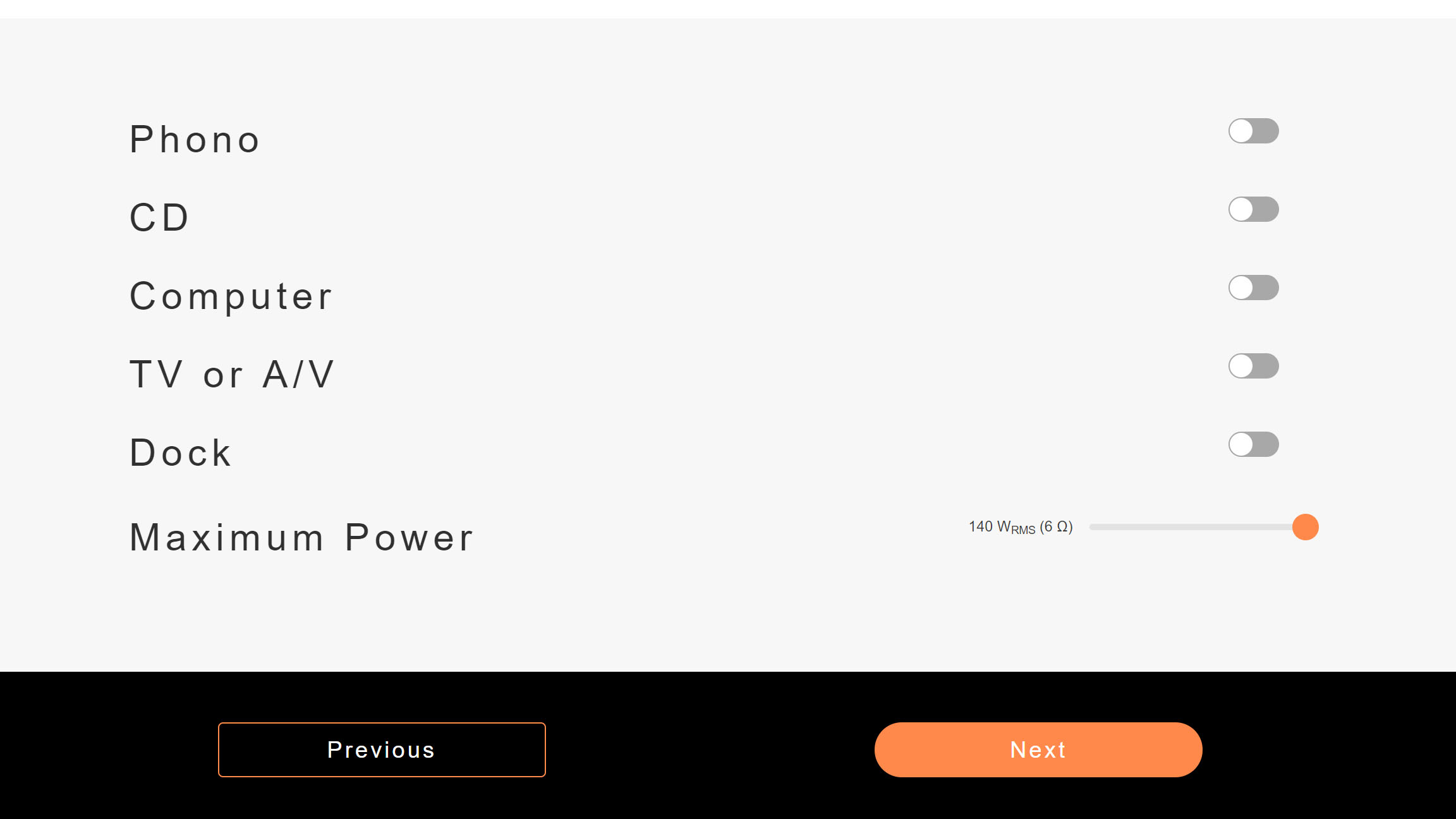
Twice as expensive competitor
In comparison, the twice as expensive Hegel H590 has more vigour and dash in the bass. It moves the air in quite a different way. Massive Attacks’ iconic Teardrop has more sinewy, heftier rhythms, and there’s no doubt that the Hegel has more power to play with. There’s more warmth here, and many would say the Hegel is more “musical”. Perhaps I’m one of them, but you should be careful not to write off an amplifier as analytical and boring, just because it has no X-factor to offer. It might actually be argued that the absence of this is the strength of the Devialet.
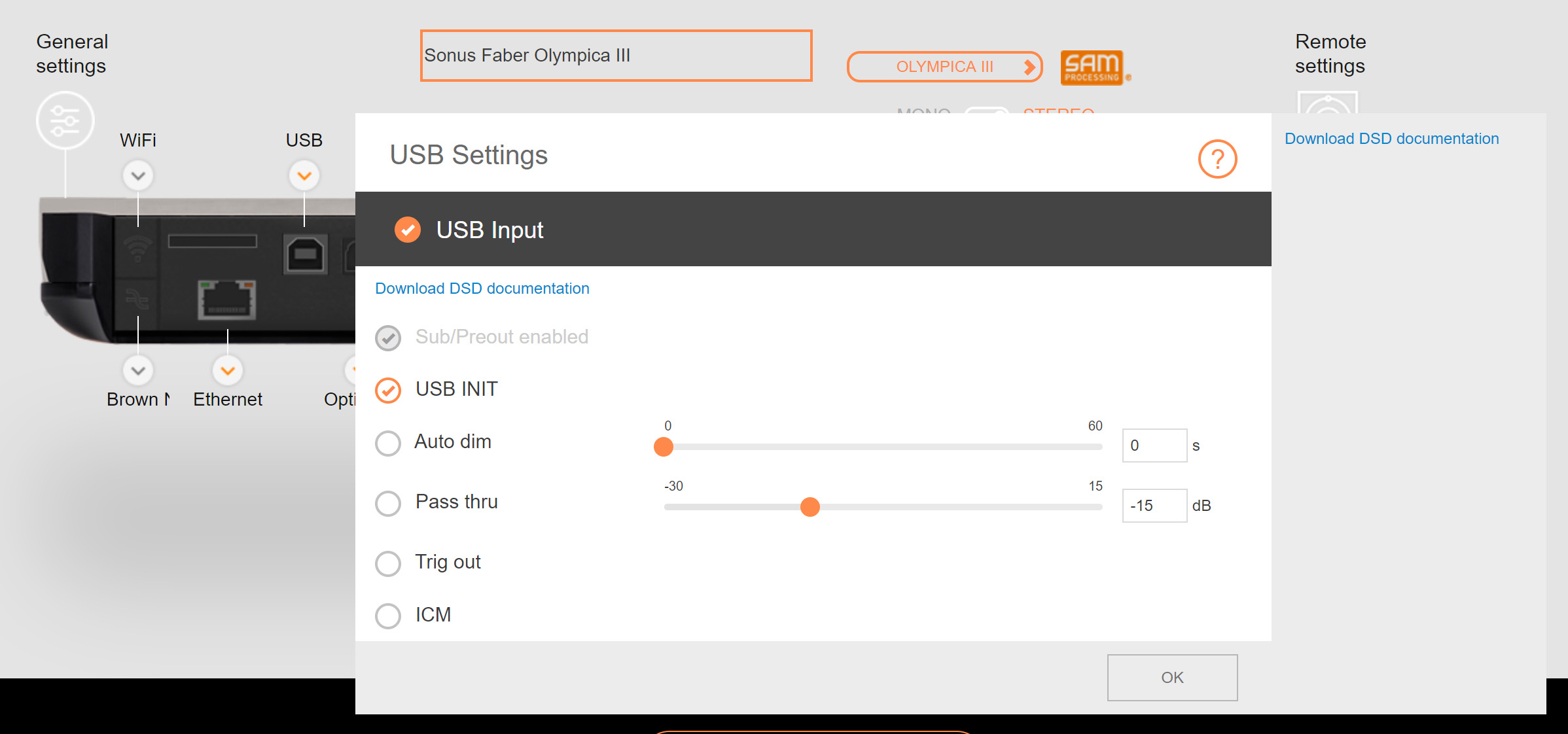
Removes a layer
What Devialet does is to remove a layer of silk between the speakers and the listener. It has a transparency that is hard to explain, it has to be experienced. One discovers this best by switching between multiple speaker pairs, because with Devialet the differences between them are greater than with any other amplifiers I know. Including the great Hegel and Naim Nova. Just hear the light, airy overtones of the Audiovectors, with their open, transparent rendering of Elizabeth Fraser’s vocal register. When I then switch to the Sonus Faber Olympica III, it darkens a bit. The overtones are more muted, the focus moves to the midrange. Which is warmer and rosier than with the Audiovector. The bass is also fuller with Sonus Faber, but it isn’t completely linear. It has an accentuation in its upper register, which is triggered quite sharply by the bass tones located right there.
Laura Marling’s Soothing has gradually become a test favourite, with a rhythmic but melancholic double bass. This sounds more faithful with Audiovector, while Sonus Faber renders some tones more strongly than others. This is underlined very clearly by the Devialet amplifier.
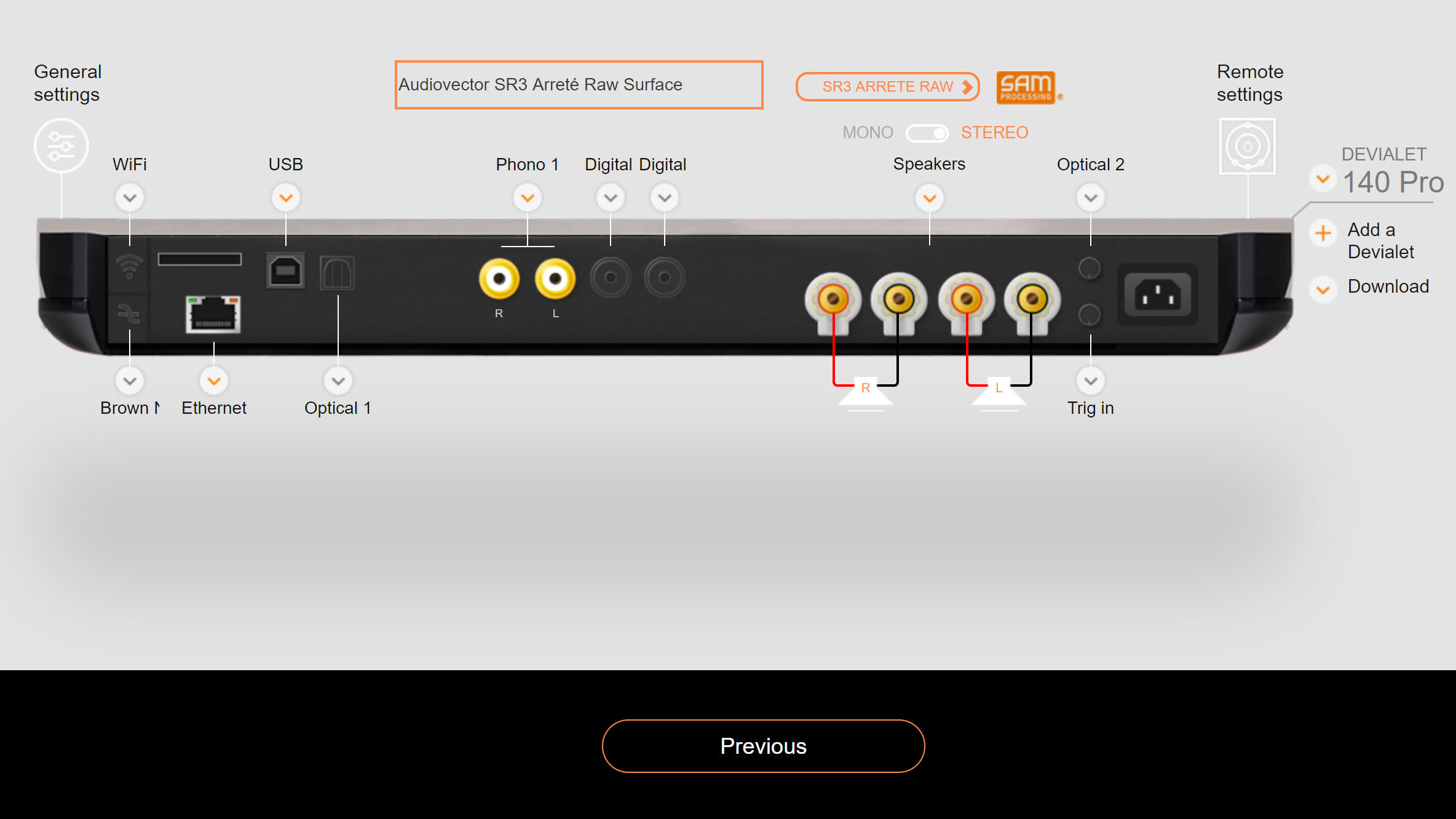
Speakers corrected
It just so happens that Devialet has a compensation filter for both the Audiovector and Sonus Faber speakers. Since this is activated by taking a memory card back and forth between the amplifier and the PC, and only one setup can be loaded at a time, it isn’t possible to make a brief AB test between the two speakers in their corrected state. Nor is it necessary, because the differences are easy to hear.
Firstly, the bass goes deeper. This applies to both speaker pairs. More importantly, the soundscape is further tightened, and suddenly the music is pulled outward to the sides, and the song vocals emerge in the room. With the Audiovectors, it all becomes ghostly transparent. Classical music also becomes a rather different affair. Dvořák’s Violin Concerto in A minor, played by first violinist Anne-Sophie Mutter and the Berlin Philharmonic, has an even better positioning of instruments, and the piano from the concert hall is transported into our test room. The first violin is clearly prominent in the soundscape, but where it often steals a little more attention from the rest, it now becomes a completely natural part of the whole.
Back to the Hegel, it’s still more powerful, but when we talk about musicality, it has lost its edge. The soundscape collapses inwardly a miniscule amount, not actually because of the amplifier, but because the speakers’ passive filters aren’t perfect. But Devialet allows you to enhance this for the most part.
Better bass
This is even clearer with the Sonus Faber Olympica III. The accentuation in the upper bass has almost vanished. This is because the amplifier brings out more energy in the deep bass, suddenly the entire double bass tone register emerges perfectly fine. The Sonus Faber too sounds great with classical music, although the speakers are not as airy as the Audiovectors. The point is that the Devialet amplifier allows the speakers to flourish as the manufacturer intended – by removing itself from the equation. And with correction, Devialet assists the speakers even more by tightening the screws in the soundscape another turn or two. It’s not just different; it’s better.
Conclusion
Expert 140 Pro is Devialet’s first amplifier for under 5,000 euro, and it’s a little marvel. It hides the same goodies inside as its larger stablemates. Which means it’s configurable to your preferences, and if you find your speakers in the Devialet database, you can enjoy some of the best sound an amplifier has to offer. Tight, consistent and with a ghostly transparency and resolution. If you’re of the opinion that the Devialet Expert 140 Pro sounds clinical, try switching speakers!

We think
The sound is transparent and excellently rendered, and potent enough to drive any speaker setup. Anyone who delights in customising can also raise the audio quality a few notches. Configuration requires a PC and memory card - we’d prefer a mobile app that worked via wi-fi. You may not find correction for your particular speakers.
49990 €
Specifications
Power output: 2 x 140 w 6 ohm
Streaming: Spotify Connect, Airplay, UPnP, Roon Ready
Inputs: USB, Ethernet, 1 configurable RCA/phono, 2 coaxial, 2 optical
Outputs: Pre-amplifier (optional)
DAC: 32-bit/192 kHz, PCM, DSD
RIAA: AD Converter with 24-bit/192 kHz sampling, MM, MC
W x H x D 38.3 x 4 x 38.3 cm
Weight: 5.65 kg
